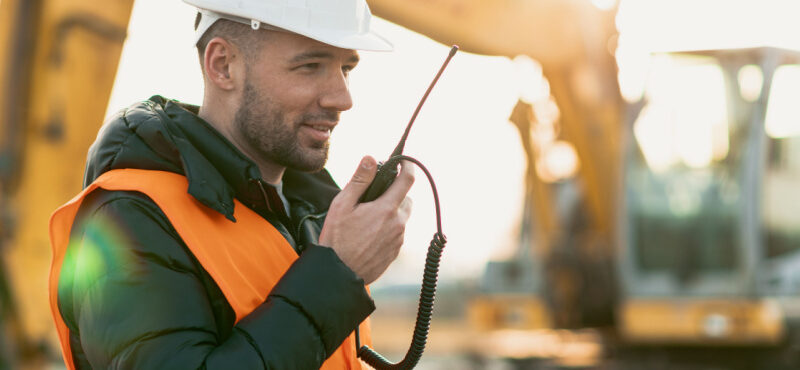Two-way radios have long been integral tools in the construction industry, playing a critical role in ensuring effective communication and enhancing safety and productivity on job sites. By leveraging the benefits of two-way radios, supervisors and project managers can significantly improve communication, enhance safety protocols, boost productivity, and ultimately contribute to the successful and timely completion of projects.
If you are curious about 2-way radio technology and its reach in today’s competitive market, you are in the right place. To understand how the juxtaposition of 2-way radio technology and real-time management contributes to the success of construction projects, let us look at some key points highlighting their significance in the industry.
- Real-time Communication
Two-way radios facilitate immediate and direct communication between construction workers, supervisors, and project managers, enabling swift coordination, quick decision-making, and prompt resolution of issues. This is especially crucial in situations where time is a critical factor, such as during emergencies or when addressing safety concerns.
- Enhanced Jobsite Safety
Effective communication through two-way radios helps in the implementation of robust safety protocols. Workers can quickly report hazards, accidents, or any other safety concerns, allowing supervisors to respond promptly. In emergency situations, these radios are essential for coordinating swift and organized evacuations and rescue operations.
Additionally, two-way radios allow supervisors and managers to monitor high-risk areas, such as excavation sites, scaffolding, or areas with heavy machinery. While there are other ways to ensure worker accountability, 2-way radios can help in ensuring workers are wearing appropriate safety gear, following safety guidelines, and practicing safe work practices.
- Improved Productivity
Construction sites are often noisy and chaotic, making it difficult for workers to communicate effectively. Two-way radios equipped with noise-canceling features allow for clear and instant communication, enabling workers to convey instructions and updates quickly.
Moreover, two-way radios facilitate seamless communication between different teams and departments, enabling supervisors, managers, and workers to coordinate tasks efficiently, which helps prevent delays and streamline operations.
- Durability and Reliability
Two-way radios are designed to withstand harsh environmental conditions commonly found on construction sites, such as dust, debris, and extreme temperatures. They are more reliable than cell phones, especially in remote areas or locations with poor network coverage, ensuring constant connectivity and communication.
- Hands-Free Communication
Many two-way radios are equipped with hands-free features, such as headsets and voice activation, allowing workers to communicate without having to stop or interrupt their tasks. This promotes uninterrupted workflow and ensures that workers can maintain their focus on critical construction activities without shelling out large sums of money to acquire conventional communication practices.
- Regulatory Compliance
Many construction projects require strict security measures, especially for sensitive areas and equipment. Two-way radios enable effective communication for monitoring and controlling access to restricted areas, helping to prevent unauthorized entry and ensuring compliance with security protocols.
- Cost-Effectiveness
Two-way radios are a cost-effective communication solution, especially when compared to the expenses associated with providing each worker with a personal cell phone. Additionally, the absence of monthly service fees makes them a more affordable option for construction companies, particularly for large-scale projects that require extensive communication.
Work With Highland Wireless
As you can see, the benefits of 2-way radios extend into many areas of the construction industry allowing project managers to perform their tasks optimally and eventually contributing to the success of the project. If you are curious about how this technology can help your construction projects, Highland Wireless and its experts would be more than happy to assist you. We are radio communication consultants that offer wireless solutions to businesses in South Florida. Call us today to learn more about our services!





